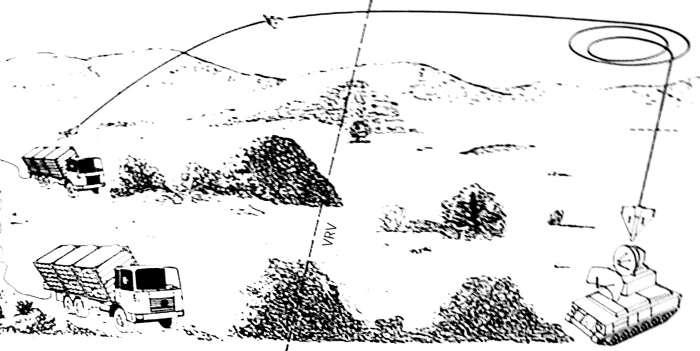An interesting image started circling around social media, it implies that the "ancestor" of the current russian-iranian Shahed-136/Geran-2 suicide drone originates from Germany, it had the name DAR (Die Drohne Antiradar).
Supposedly, it transformed into Israeli IAI Harpy anti-radar loitering munition, until it got reverse-engineered by iranians into what we nowadays know as Shahed-136. Worth noting, the russian analog Geran-2 is practically the very same iranian weapon, although there were indications they try to improve some of iranian obsolete manufacturing technologies.
Read more: Ukrainian Defense Industry Has No "Shahed-136 Analog" in Production But Chose a Correct Focus on FPV Drones

The history of DAR is actually pretty interesting and worth a closer dive into the topic.
In mid-1980s, Germany and the USA commenced a joint project aimed to create a specialized single-use UAV that would be able to target Soviet radars, become a decoy averting enemy air defenses from real weapons, or wipe anti-aircraft systems altogether in a "fire-and-forget" way.

German aircraft manufacturer Dornier (existed: 1922– 2002) came out as winner of the competition for the contract, their product was known as Die Drohne Antiradar, the production process also implemented some technologies developed by Texas Instruments.
According to openly available data, DAR was an explosive aerial suicide drone with a weight 110 kg, maximum speed 250 km/h (155 mph), flight duration up to 3 hours, thus the potential range should be around 600 km; the engine was supplied by Fichtel and Sachs — now it's making solely car engines.

The drone was supposed to take off a special truck on the MAN 22.240DE chassis, each could carry six UAVs, although the prototypes were initially launched from an Iveco 260AH. The loitering munitions were launched practically the same way as modern Shahed-136 are.
As far as known, DAR should have entered service with the German Bundeswehr in the 1990s but the "Cold War" ended, the adversary ceased to exist, hence Die Drohne Antiradar became no longer relevant. Afterward, the traces of this project are lost in time.
A few drones are displayed at the military museum of the now defunct Dornier. There is also a claim that all two prototypes of launch vehicles were sold off to an unknown customer in 2009.
How much of a DAR later transformed into IAI Harpy or into Shahed-136/131 is an open question. Still the fact remains that the US-German project became the genesis of the anti-radar drones.

Read more: China Shows a Shahed-136 Copy Called Sunflower 200, and It's Serious Threat














